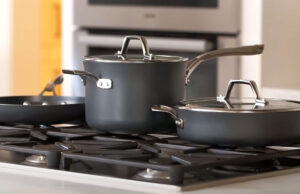As an Amazon Associate, I earn from qualifying purchases at no extra cost to you.
Beko Dishwasher Not Heating Water? Fix It Fast
Have you ever opened your Beko dishwasher and noticed the water stayed cold? It can be really frustrating because dishes never get fully clean. But don’t worry, you are not alone. This is a common issue that many people face with their dishwashers. In this article, you will learn why this happens, what causes it, and how you can fix it in simple ways without confusion.
Beko Dishwasher Not Heating Water: Complete Troubleshooting Guide
Check the Heating Element
The heating element is like the heart of the dishwasher when it comes to hot water. It warms up the water so your dishes come out spotless and dry. If the heating element is broken or damaged, your Beko dishwasher cannot heat water properly. You can often see it at the bottom of the machine. Sometimes, it may look burned, cracked, or worn out.
When the element fails, water stays cold even during the hottest wash cycle. You might also notice cloudy glasses, greasy plates, or food stains left behind. In some cases, the dishwasher might even stop mid-cycle because it cannot reach the right temperature. This part is very important, and without it, cleaning is never the same.
To check the element, you first need to switch off the power supply for safety. Then, remove the bottom rack to get a clear view. Use a multimeter tool to test if the element has continuity. If the reading is not correct, the element must be replaced. Luckily, new heating elements are not too expensive and are widely available.
If you replace the heating element, make sure you choose the right part made for your Beko model. A wrong part can cause more problems. After installing the new one, your dishwasher should heat water normally again. With this fix, your dishes will look shiny and clean just like before.
- Heating element warms the water.
- A broken element leaves water cold.
- Use a multimeter to test it.
- Replace with the correct Beko part.
Inspect the Thermostat
The thermostat works like a small guard inside your dishwasher. Its job is to check the water temperature and control how hot it gets. If it fails, the water may never heat up or may get too hot. This small device makes sure the cycle is safe and balanced. Without it, your dishwasher cannot function properly.
If your Beko dishwasher runs but dishes are still dirty, the thermostat may be the problem. You might even notice the water feels lukewarm instead of hot. Sometimes, cycles stop early when the thermostat is broken. These are all signs that this part is no longer working as it should.
To check the thermostat, disconnect your dishwasher from power first. You can usually find it attached near the heating element or hidden in the base. A multimeter can again be used to test continuity. If the reading shows no connection, then the thermostat is faulty and needs replacing.
When installing a new thermostat, make sure you use the correct part that matches your dishwasher model. Doing this ensures safety and proper performance. Once fixed, your machine should heat water to the right level again, making every cycle effective. Clean plates, shiny glasses, and fresh-smelling dishes will return.
- Thermostat checks water heat.
- A bad one leaves dishes dirty.
- Test with a multimeter.
- Replace with the right model part.
Examine the Wiring and Connections
Many times, the reason behind cold water is not the parts themselves but the wires that connect them. Loose or burned wiring can cut off power to the heating element. When this happens, the heater cannot turn on even if it is perfectly fine. So, checking the wiring is a very important step.
You can carefully inspect the wires near the heating element and thermostat. Look for signs like burned spots, broken covers, or loose ends. Any damage here means the connection is not working correctly. If the wires cannot carry electricity, heating will stop completely.
If you are comfortable, you can gently tighten loose connectors or replace damaged wires. Always turn off the power before touching anything inside. If you are unsure, calling a qualified technician is the safest choice. Electricity is not something to play with without proper care.
Good wiring ensures steady power flow. Once repaired, your Beko dishwasher should heat water like normal again. This simple step often saves people money and prevents bigger issues later.
- Loose wiring cuts power to heater.
- Look for burn marks or damage.
- Tighten or replace bad wires.
- Safety first—power off before checking.
Test the Control Board
The control board is like the brain of your dishwasher. It sends signals to every part, telling them when to start and stop. If the control board is faulty, the heating cycle may never begin. This is why checking the board is so important if other fixes do not work.
You may notice unusual behavior if the control board is failing. The dishwasher might stop randomly, skip heating, or show error codes on the display. Sometimes the machine runs a full cycle, but dishes still come out cold and dirty. This often points to a board issue.
Testing the control board requires care. You can remove the panel and look for burn marks, damaged parts, or loose connections. Some boards can be tested with special tools, but usually replacing them is the best option when faulty.
Although control boards can be more expensive, they are worth replacing if needed. A new board can bring your dishwasher back to full performance. Once changed, the heating and cleaning cycles will return to normal.
- Control board gives heating commands.
- Faulty boards cause random issues.
- Check for burn marks or damage.
- Replace if no other fix works.
Clean the Filters and Spray Arms
Sometimes the problem is not an electrical fault but a simple blockage. If filters and spray arms are clogged, water circulation suffers. This means heat does not spread evenly, and cleaning becomes poor. While it might not stop heating fully, it still feels like the water is cold.
Food particles, grease, and limescale often collect in filters. Spray arms can also get blocked by small food bits. When this happens, hot water cannot reach all parts of the dishwasher. You will see dirty dishes and spots even after a full cycle.
Cleaning these parts is easy but very effective. Take out the filters and rinse them under running water. Use a small brush if needed. Remove spray arms and clear out any holes that look blocked. Warm soapy water helps remove grease faster.
Doing this simple cleaning once a month keeps your dishwasher running smoothly. It also supports proper heating and water flow. Many times, people fix their cold water issue just by cleaning the inside parts.
- Filters trap dirt and grease.
- Blockages stop hot water flow.
- Rinse filters and spray arms well.
- Clean monthly for best results.
Call a Professional Technician
If you have checked everything but your dishwasher still does not heat, then it may be time to call a professional. Some problems are deeper and harder to find without experience. A trained technician can test hidden parts, run advanced checks, and make repairs safely.
Sometimes, the issue may be with the wiring inside walls, sensors you cannot reach, or advanced control system problems. These are not easy to handle without the right tools. Fixing these alone can even make the problem worse or unsafe.
Professionals know exactly how Beko dishwashers work. They can quickly tell if the problem is the heater, thermostat, wiring, or board. By letting an expert handle it, you save time and avoid mistakes. It may cost more, but it ensures your machine works again without risks.
In the end, calling a technician is the smartest option if the basic checks do not solve the issue. This way, you can enjoy hot water cycles again with peace of mind.
- Call experts if problem continues.
- Some faults are hidden and complex.
- Technicians test and repair safely.
- Saves time, avoids risks, restores heat.
Final Thoughts
Fixing a Beko dishwasher not heating water can feel stressful, but solutions are often simple. By checking parts like the heating element, thermostat, wiring, and cleaning filters, most problems can be solved. If nothing works, a professional can bring your dishwasher back to life. With these tips, you can enjoy sparkling clean dishes again and avoid the stress of cold water cycles.
| Problem | Possible Cause | What To Do |
|---|---|---|
| Water stays cold | Broken heating element | Test and replace element |
| Lukewarm wash | Faulty thermostat | Check with multimeter, replace |
| Heater not working | Loose or damaged wiring | Inspect and fix connections |
| Cycles skip heating | Faulty control board | Inspect or replace board |
| Dishes dirty | Clogged filters/spray arms | Clean monthly |
| Nothing helps | Deeper hidden fault | Call technician |
Do dishwashers work without hot water?
Dishwashers can run with cold water, but the results are never satisfying. Without hot water, grease stays stuck, and germs are not fully removed. Cold washes also leave dishes looking dull and smelling odd. The heating element is there for a reason: it breaks down food particles and ensures proper hygiene.
In fact, modern detergents are designed to activate in warm water. Without heat, they simply do not dissolve or clean as they should. This makes every cycle less effective. Over time, residue can build up inside the dishwasher too, making it smell unpleasant.
Although a dishwasher can complete cycles using only cold water, it is not practical. Your dishes may come out worse than when you placed them inside. Plus, it can stress the machine because it works harder when cleaning is poor. Hot water is truly essential for a dishwasher to function properly.
For best results, your Beko dishwasher should always heat water during cycles. If heating fails, you should find and fix the cause quickly. Otherwise, you may waste time, detergent, and energy while still ending up with dirty dishes.
Can I fix a dishwasher heating element myself?
Yes, you can replace a dishwasher heating element yourself if you feel confident and careful. Many people choose this DIY option because it saves money. The process is not too complicated, but it does require safety and patience.
The first step is to disconnect the dishwasher from power and water supply. Then, you can access the bottom part where the heating element sits. A new element can usually be installed by removing screws or connectors and putting the new one in place.
Using a multimeter is important before replacement. It helps you confirm that the heating element is truly faulty. If the reading shows no continuity, replacement is the right choice. Once installed, reconnect everything and run a cycle to check if the water heats up properly.
While it is possible, not everyone is comfortable working with electrical parts. If you feel unsure, it is better to ask for professional help. This ensures the repair is safe and effective. In the end, fixing it yourself is possible, but only if you are careful and follow safety rules.
Do dishwashers have reset buttons for heating issues?
Most Beko dishwashers do not have a dedicated reset button for heating issues, but they do allow you to reset the whole system. This can sometimes clear small faults or glitches. For example, unplugging the dishwasher for a few minutes and plugging it back in can reset the electronics.
If the heating issue is caused by a small software problem, a reset might fix it. However, if the heating element or thermostat is damaged, resetting will not solve anything. Physical parts cannot be fixed with just a restart.
Some models may include button combinations to reset the machine. You can check your user manual to see if your dishwasher has such options. Following the right method can sometimes help restore proper function temporarily.
Although resets can be useful, they are not a long-term fix. If your Beko dishwasher does not heat water because of a broken part, then replacing that part is the only real solution. Use resets only as a first quick attempt before checking deeper issues.
Can cold washes damage a dishwasher?
Running a dishwasher only with cold water does not usually damage the machine itself right away. However, it can cause problems in the long term. Without heat, food and grease may build up inside the system. Over time, this buildup can clog filters, spray arms, and hoses.
Cold washes also allow bacteria and mold to grow inside the dishwasher. Since the inside stays damp and never gets hot enough, it becomes a perfect place for unpleasant smells. This can make the machine less hygienic and harder to clean later.
Another issue is detergent performance. Most detergents are made for warm or hot water. In cold washes, they do not work fully. This makes cycles longer and less effective, which can put extra strain on the pump and motor.
So, while cold washes may not break your dishwasher instantly, they reduce its cleaning power and lifespan. For both hygiene and machine health, hot water cycles are always better.
Frequently Asked Questions (FAQs)
Is it normal for a dishwasher to feel cold inside after washing?
Yes, it can be normal because most dishwashers cool down after finishing a cycle. However, if your dishes are greasy or dirty, then the heating may have failed.
Can I use my dishwasher if the heating element is broken?
You can, but the results will be poor. Dishes will not get fully clean, and bacteria may stay. It is always best to replace the heating element.
Do I need hot water supply for my Beko dishwasher?
No, Beko dishwashers heat their own water inside. They do not require hot water from your home tap. But the heater must be working.
Is it safe to replace a thermostat myself?
It can be safe if you know how to handle electrical repairs. Always turn off power first. If unsure, hiring a professional is the safer choice.
Can a faulty control board stop water heating?
Yes, the control board controls every function. If it fails, it may not send signals to the heating element. Replacing the board usually solves the issue.
Do I need to clean the filters often to avoid heating issues?
Yes, dirty filters can block water flow and make heating uneven. Cleaning them once a month helps keep your dishwasher working well.
Is it expensive to repair a Beko dishwasher that does not heat water?
The cost depends on the faulty part. Heating elements are usually affordable, but control boards can be pricier. Professional repair adds to the cost.
Can limescale affect the dishwasher heater?
Yes, limescale buildup can cover the heating element and reduce its power. Regular cleaning with descaler products helps prevent this problem.




